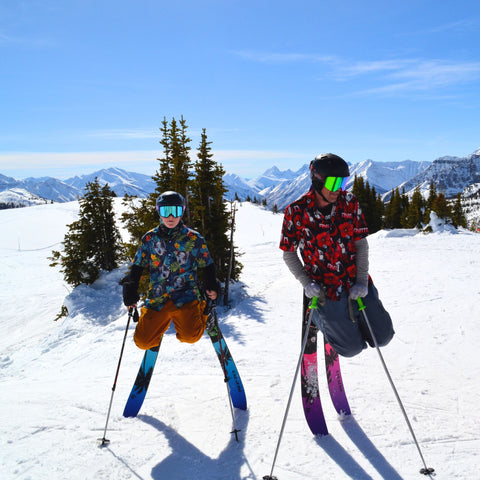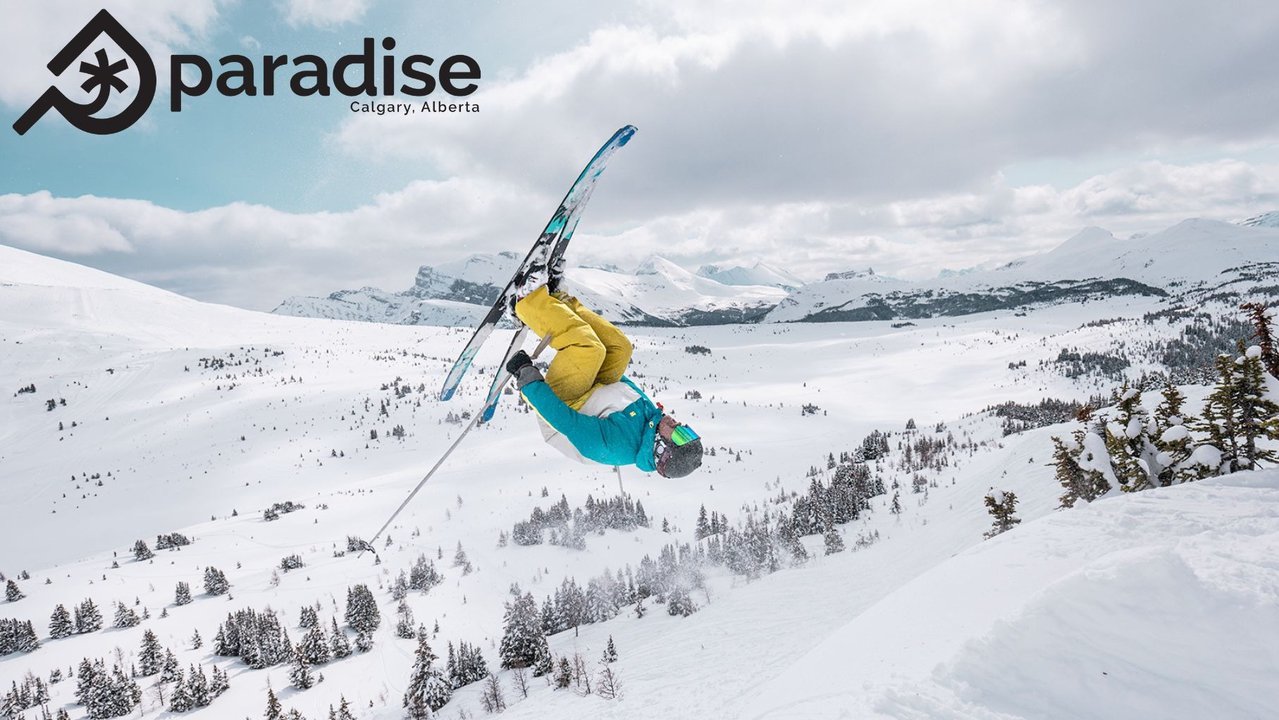HOW THE CHANGES IN SKI MANUFACTURING HAVE CHANGED THE FREESKI MOVEMENT.
WRITTEN BY PARADISE AMBASSADOR JEREMY JACQUES - Origonally posted on paradiseskis.com
My name is Jeremy. I am a freeride coach for ULLR Big Mountain at Lake Louise.
I have been skiing for many, many years now. I have seen the changes in the engineering of skis. For example: I used to race on 210cm GS (straight) skis. Now I am on a pair of 191cm VICE 113 big-mountain skis with a 113mm underfoot.
A while ago a good friend asked me how the changes in the ski manufacturing industry changed the freeski movement. After some Google searches and reading up on the evolutions of ski design, brought me here...
The evolution in materials, design, and technology has revolutionized the big mountain ski experience. Meaning skiers experience enhanced performance, maneuverability, and versatility on challenging and diverse terrain. In the days of straight skis, big mountain skiing presented a different set of challenges. The skis were longer and narrower with minimal sidecut, making it harder to navigate tight spaces and maneuver through variable conditions.
The lack of width and shape limited the skier's ability to float on powder, which is a staple of big mountain environments. The old straight skis required a more aggressive and technically demanding approach, often relying on the skier's strength and skill to navigate the terrain.
The shift towards shaped skis marked a significant turning point in big mountain ski engineering. Shaped skis introduced a more pronounced sidecut, meaning the skis were wider at the tip and tail, with a narrower waist. This design allowed skiers to turn more easily and provided better control, especially on groomed slopes. However, when it came to big mountain skiing, these early-shaped skis still had limitations in terms of floatation in powder and stability on challenging, ungroomed terrain.
As ski engineering progressed, manufacturers began to explore the benefits of rocker technology. Rocker, or reverse camber, involves a gradual upward curve at the tip and tail of the ski, with the middle remaining in contact with the snow. This design innovation significantly impacted the big mountain ski experience. Rocker enhanced floatation in powder, allowing skiers to glide on top of deep snow with reduced effort. It also improved maneuverability and ease of turn initiation, making it easier for skiers to navigate through trees, bumps, and other variable terrain encountered in big mountain environments.
Materials used in ski construction have also played a big role in transforming the mountain ski experience. The introduction of lightweight yet strong materials, such as carbon fibre, advanced composite blends and bamboo, has resulted in skis that are not only durable but also more agile. This shift is particularly beneficial for big mountain skiers who often face long descents and varied conditions. The reduction in weight contributes to decreased fatigue, allowing skiers to maintain control and precision throughout their descents.
Also, the widening of skis has become a defining feature in big mountain ski engineering. Wider skis, with increased waist widths, offer improved stability and performance in challenging conditions. The additional surface area provides better floatation in deep snow, a crucial advantage in big mountain skiing where powder conditions are prevalent. The width also contributes to a more stable platform, allowing skiers to confidently tackle variable terrain, from steep chutes to open bowls.
The combination of rocker technology and wider skis has led to a shift in big mountain ski design. Skiers now enjoy a more versatile and forgiving experience, with the ability to navigate through powder, crud, and choppy conditions with greater ease.
_________________________________________________________________
ABOUT JEREMY

(Like father like son)
A freeride ski coach of ULLR Big Mountain - Jeremy hits the slopes all winter and trains for aerials in the off-season. He's constantly spreading the stoke, sharing his passion for the sport, and helping those around him improve!
Think you're too old to learn new tricks? Jeremy did his first backflip at 44 years old! Now in 2024, he's perfected frontflips.
IG: @jeremyjacques7


Comments